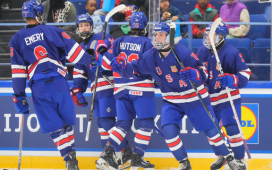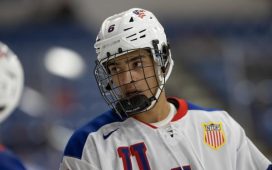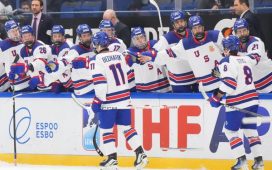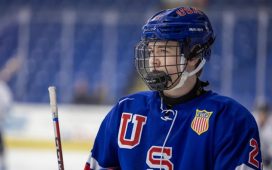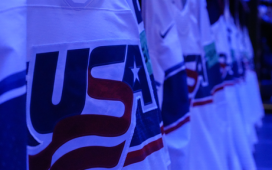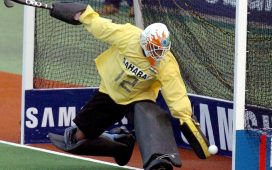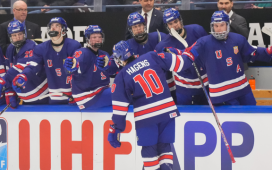We can almost consider the new collective bargaining agreement between the NHL and NHL Players’ Association ratified. As of press time, it’s been approved by the PA’s executive board and passed down to the PA members. The extension will bring labor peace through 2025-26. Included in the deal: a flat salary cap that will carry this season’s mark of $81.5 million into the 2020-21 campaign.
Before the COVID-19 pandemic made the NHL pause its season for what will be close to five months, the NHL was projecting a meaty cap increase to between $84 and $88 million. Many teams around the league were operating their payrolls under the assumption of a healthy spike in the cap. So, naturally, with the news of the flat cap, a few teams appear to be in trouble on paper heading into the off-season – especially because compliance buyouts will not be part of the CBA extension.
Which teams should be sweating the most over a flat cap? Here are my top five.
1. TAMPA BAY LIGHTNING
– 15 players signed for 2020-21
– Projected cap space: $5.33 million
– Projected LTIR players: none
The modern incarnation of the Lightning have become what the Chicago Blackhawks were in the previous decade, minus the Stanley Cups: loaded with expensive talent that creates annual cap quagmires. Just as GM Stan Bowman had to ship out big names repeatedly over that run, GM Steve Yzerman and, now, Julien BriseBois have done the same in Tampa over the past few seasons, trading the likes of Jonathan Drouin and J.T. Miller. Moving out Miller was crucial last year to create room for RFA Brayden Point. This summer, the Bolts have two more important cogs to re-up in center Anthony Cirelli and defenseman Mikhail Sergachev.
At this point, Cirelli has done enough to earn a long-term extension. For two years running, he’s been one of the NHL’s best defensive forwards, and he has a real shot to finish as a Selke Trophy finalist or better for 2019-20. Given there’s still some offense left to harvest from his game, the Bolts would be wise to lock him up to a long-term extension at a price that will eventually be a bargain, like the Philadelphia Flyers did with Sean Couturier in 2015 a couple years before his scoring bloomed. Could Tampa get Cirelli for an AAV in the $5-million range?
If so, would that price Sergachev into bridge-contract territory? Coach Jon Cooper finally entrusted the big, talented defenseman with a major minutes increase this season, and Sergachev showed real two-way ability. He, like Cirelli, probably deserves a long-term extension. If we use someone like the Flyers’ Ivan Provorov as an example, it could push Sergachev’s AAV north of $6 million, though Lightning players are known to take on-paper discounts because of Florida’s tax breaks.
No matter what the permutations are – even if Cirelli and Sergachev miraculously both sign bridge deals – Tampa doesn’t have enough cash flow for them. The Lightning have just three defensemen under contract for 2020-21 so far: Victor Hedman, Ryan McDonagh and Braydon Coburn. BriseBois has major work to do.
The Yanni Gourde contract felt hasty the day it happened and looks bad today, with Gourde having earned $5.17 million this season to score 10 goals and mostly play in the bottom six, averaging 14:04 per night and counting Cedric Paquette and Patrick Maroon as his most common 5-on-5 linemates. Considering Gourde has a full no-trade clause, that deal is an absolute killer for Tampa’s cap right now. All Tampa’s forwards in that pricing tier – Ondrej Palat, Tyler Johnson, Alex Killorn – have full no-trade clauses at the moment. Killorn’s NTC changes this off-season to a modified NTC in which he can block trades to 16 teams. Coming off a career year, his trade value has never been higher, but that also makes him important to Tampa. Gourde may thus still be the best trade candidate among that group, as he’s perhaps the most likely to waive his NTC given his reduced role. A fresh start could benefit him.
2. ST. LOUIS BLUES
– 20 players signed for 2020-21
– Projected cap space: $2.05 million
– Projected LTIR players: none
Usually, entering an off-season with 20 players signed would put a team in ideal shape. But it’s a matter of which players the Blues haven’t inked for 2020-21. The biggie, of course, is captain and No. 1 defenseman Alex Pietrangelo, who is fresh off the best season of his career, in which he set a career high with 16 goals and was on track to beat his personal best of 52 points had he not been limited to 70 games by the shutdown. Pietrangelo also graded out as elite defensively and should finish in the top five of the 2019-20 Norris Trophy vote, if not top three.
Right-shot comparables Drew Doughty and Erik Karlsson were drafted the same year as Pietrangelo and, coming out of their entry-level pacts, received similar deals to his. Doughty got eight years at a $7-million AAV, Karlsson got seven years at a $6.5-million AAV, and Pietrangelo got seven years at a $6.5-million AAV. While Doughty and Karlsson have three combined Norris Trophies and Pietrangelo has none, he’s still one of the best all-around workhorse blueliners in the game, so Doughty and Karlsson make for decent ceiling comparables during Pietrangelo’s negotiations with the Blues. He may not crest $11 million per year as they did, especially with the flat cap hampering many other suitors, but he could command an eight-year, $80-million deal to stay in St. Louis. John Carlson, another right-shot 2008 draftee, got an eight-year, $64-million extension a year after winning the Cup, so perhaps Pietrangelo lands somewhere between Carlson money and Karlsson money.
The Blues didn’t have the cap space to re-up Pietrangelo even before the flat cap announcement. Now they have a couple million bucks to split between Pietrangelo and an important RFA in puck-moving defenseman Vince Dunn. The math obviously doesn’t work, so GM Doug Armstrong will have to move bodies out. But whom? Justin Faulk just signed an extension last September. The only expensive Blues D-man without any movement restrictions on his contract is Colton Parayko, and he’s a crucial cog. Up front, Brayden Schenn doesn’t technically have any movement restrictions on his contract right this second, but his eight-year extension kicks in this off-season and begins with a 15-team no-trade list.
The most obvious candidate to move is goaltender Jake Allen. He was excellent this season, but $4.35 million is not a luxury St. Louis can afford for a backup. If there’s one skater to watch as Armstrong tries to create room for Pietrangelo, it’s left winger Jaden Schwartz. His contract carries a $5.35-million cap hit through the end of 2020-21 and includes a 15-team no-trade list. Hey, that means Armstrong can speak to at least 15 teams.
3. CHICAGO BLACKHAWKS
– 18 players signed for 2020-21
– Projected cap space: $7.35 million
– Projected LTIR players: none
It’s like old times again for Bowman. In this case, some wise moves over the past couple years are coming back to “bite” him. By trading a fifth-round pick last winter, Bowman secured a winger who would lead the NHL in goals per 60 minutes this season and become just the eighth rookie in the past 10 seasons to snipe 30 goals: Dominik Kubalik. He’s been so much better than expected, however, that his price as an RFA this summer wasn’t exactly factored into Chicago’s payroll. Dylan Strome, swiped from the Arizona Coyotes for Nick Schmaltz last winter, also needs an extension. Oh, and Chicago has no goalie signed for next season, as it traded Robin Lehner at the 2020 deadline, Corey Crawford is a UFA and Malcolm Subban is an RFA.
How on Earth will Bowman re-up Kubalik and Strome, not to mention depth forward Drake Caggiula, and find a starting goalie for $7.35 million? In theory, defenseman Brent Seabrook would make a perfect LTIR candidate, but the fact he’s attempting to return for the play-in tournament means he’s healthy for now. Andrew Shaw is less likely to make it back for the play-ins. If the two of them start next season on LTIR, that’ll free up close to $11 million, so it’ll be giddyup for Chicago’s cap. But if Seabrook returns for the play-in and is suddenly unfit to play next season, it’ll look more than a little fishy.
4. TORONTO MAPLE LEAFS
– 16 players signed for 2020-21
– Projected cap space: $4.59 million
– Projected LTIR players: none
The good news: the Leafs actually don’t have one of their mega-talent RFAs to re-sign this summer. They’ve committed almost $30 million annually to William Nylander, Auston Matthews and Mitch Marner. Kasperi Kapanen and Andreas Johnsson have multiple seasons left on the bridge deals they signed last summer. The Leafs even extended veteran UFA defenseman Jake Muzzin this season.
So why are they in trouble? With Tyson Barrie departing as a UFA, they’re again in desperate need of one if not two impactful right-shot defensemen, and there simply isn’t any money available to pursue upgrades there at the moment – especially considering Toronto must squirrel aside some money if it wants to re-sign goalie Frederik Andersen, whose contract expires next summer. To get around the problem, GM Kyle Dubas probably has to dangle one of his mid-tier forwards, none of whom has any movement restrictions on his contract right now: the group including Kapanen, Johnsson and Alexander Kerfoot.
Maybe Dubas can work some wizardry, as a player like Kapanen, for instance, would command plenty of interest on the trade market, and emerging prospect Nick Robertson could fortify the depth chart on the wings as early as next season or even the play-in tournament next month. There’s also a good chance Toronto tries to acquire some more LTIR contracts now that David Clarkson’s and Nathan Horton’s are set to expire this summer. But Dubas will have to do some serious tapdancing just for his roster to break even, and that’s a concerning proposition for a team that needs to get better, not remain stagnant.
5. ARIZONA COYOTES
– 16 players signed for 2020-21
– Projected cap space: $1.51 million
– Projected LTIR players: Marian Hossa, $5.28 million
Look at you, Coyotes! Rockin’ the deep pockets and spending to the cap after many years as a floor team! It’s refreshing to see. The Desert Dogs, however, remain a fringe playoff team, gifted a spot in the play-in-tournament after finishing with the Western Conference’s 11th-best points percentage. Phil Kessel did not do nearly enough to justify his $6.8-million cap hit (down from $8 million, $1.2 million of which is retained by the Leafs from two trades ago). The Coyotes have also committed millions of dollars on extensions that involve a ton of projection. They didn’t get Schmaltz or Clayton Keller on bargains. With Keller’s new deal kicking in for 2020-21, the Coyotes are paying them a combined $13 million for production that hasn’t come close to that value yet. They went all-in with a Taylor Hall trade in December, but it was a rental. He’ll be the most expensive forward on the UFA market by far.
The Coyotes can’t afford to keep Hall right now, as he should cost $9 million or more per season – perhaps $10 million factoring in his 2017-18 Hart Trophy. Their next-biggest contract to figure out is that of RFA Vinnie Hinostroza, which won’t be a brank-breaker, so they can focus on Hall. With Hossa having one more year on his LTIR deal, Arizona’s true cap space is closer to $7 million. If GM John Chayka could use a sweetener to find a taker for Derek Stepan, who has one more year at $6.5 million, keeping Hall could be a possibility. The question is whether Hall will sign long term or choose a one-year deal and go to market next summer, when suitors will (hopefully) have more money to throw at him.
Want more in-depth features, analysis and an All-Access pass to the latest content?Subscribe to The Hockey News magazine.
